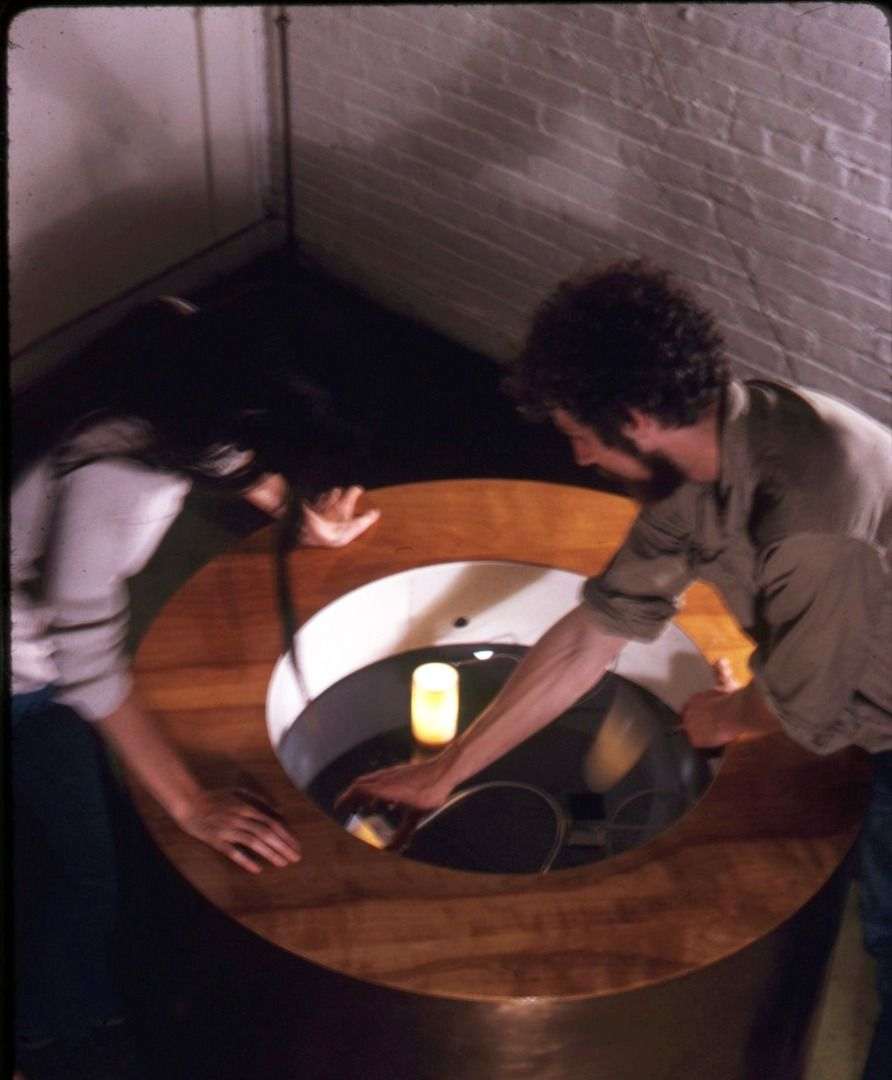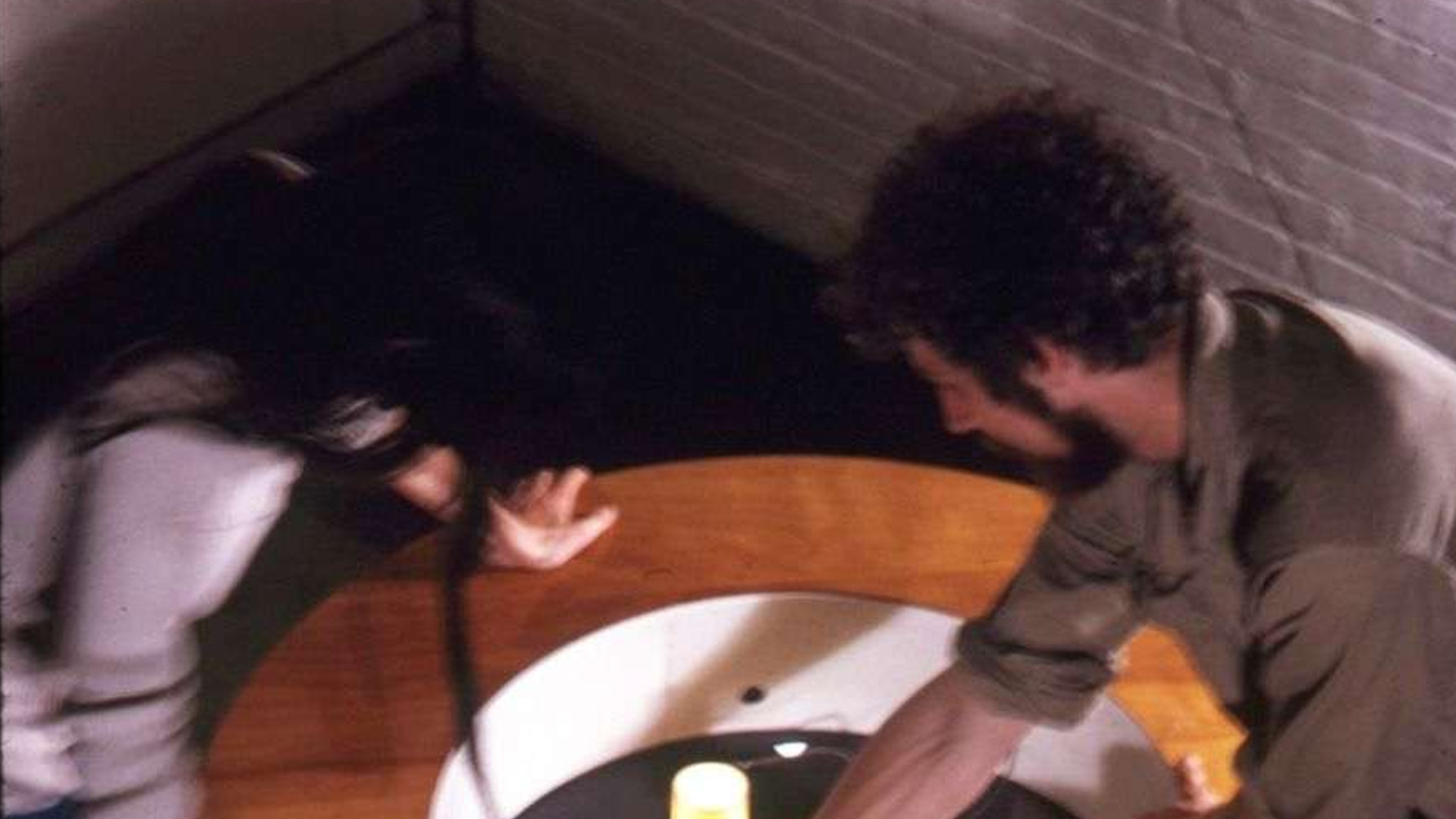Pioneering intermedia artist Tony Martin passed away on March 24 at the age of eighty-three. With its early focus on collecting and showing video, digital, and intermedia art, the Everson is fortunate to have had a long history with Martin, which includes The Well, his breakthrough work, as a beloved part of the Museum’s permanent collection. The Well, which traveled the United States in 2015’s acclaimed Hippie Modernism exhibition, was created in 1967 after Martin took up a position as a visiting artist at NYU’s newly formed Intermedia department.
The Well consists of a large copper-clad cylinder containing an optical lens shaped like a basin. When a viewer interacts with the sculpture by dipping their hands into the basin, optical sensors activate various ethereal lights within the sculpture’s body, including a mysterious rippling reflection made by activating a pool of mercury with audio waves. As with all of Martin’s work, The Well had a conceptual underpinning that elevated it beyond mere spectacle. Whenever Martin spoke about The Well, he emphasized its ability to make viewers step away from their own selves, putting them in touch with greater forces.
Music fans will recognize Martin for the central role that he played in inventing the psychedelic light shows used by Bill Graham at the Fillmore West in San Francisco for artists like Big Brother and the Holding Company and the Grateful Dead. During that time, he also collaborated with avant-garde composers and artists like Pauline Oliveros, John Cage, and Yoko Ono. After moving to New York City, his NYU residency led to a long series of collaborations and innovations that included the creation of a vector image generator that used innovative technology to generate lines and shapes that were projected onto a wall.




